Give these two new residents your warmest welcome and step into the Quiet Zone at the beaver pond! The beaver pond by The Lodge at Moose Lake is home to two brand-new furry and adorable friends! One-year-old American beavers, Squash and Hashbrown, recently moved in with our 15-year-old beaver, Acorn. While they are still settling in and adjusting to life at Cheyenne Mountain Zoo, they are quickly becoming more confident, and have made fast friends with Acorn, who is showing them the ropes. While their keepers have high hopes for their future endeavors as ambassadors, trust is being established between the new beavers and the keeper team.
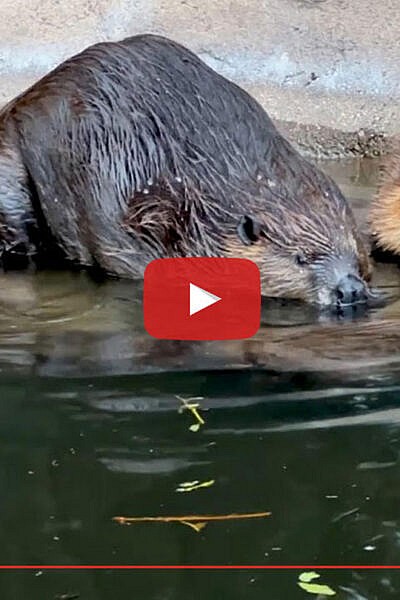

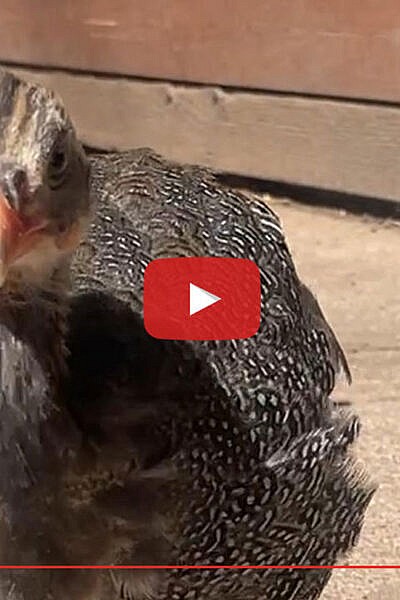

There are some new whiskers, feathers and wings for you to visit in My Big Backyard on your next CMZoo adventure. Stop by and say hello to the 2-month-old guinea fowl chick (known as a keet), honeybees, African fruit chafer beetles, 3-month-old rats and extinct-in-the-wild Simandoa cave roaches!
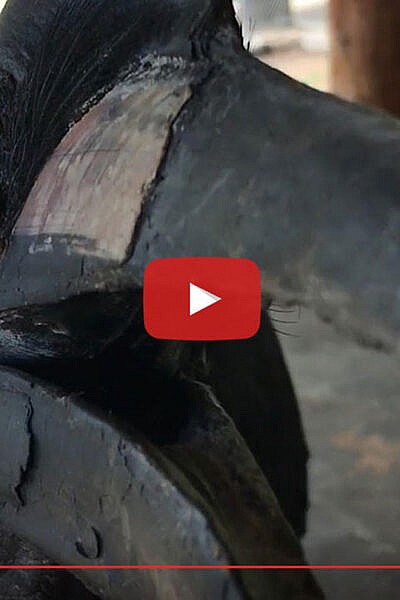

Petrie’s and Layla’s charming antics, from their playful foot-slaps to their enthusiastic enrichment tossing, make it impossible not to adore them.
Our Abyssinian (Northern) ground hornbills have been spending a lot of time exploring their unique home! Their exhibit was inspired by a real-life shop near our conservation partner Tsavo Trust in Kenya, showcasing the coexistence of humans and animals in rural Africa.
Hornbills are curious and intelligent creatures, and they love to investigate everything in their sight. This can lead to human-wildlife conflicts in their native environment. Hornbills tend to break windows during breeding season because they think their reflection is a competing bird. Painting windows, putting mesh in front of windows and using unbreakable materials are some solutions to this problem. Locals are working with conservationists to catch and relocate problem birds.
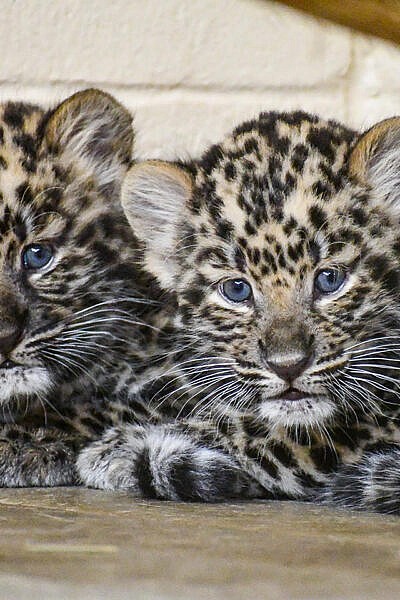

UPDATE September 17, 2023 – Four-month-old brothers, Basha and Mango, are growing quickly and are full of energy!
UPDATE August 29, 2023 – Mango and Basha are discovering the world, one pounce at a time!
This dynamic duo is learning how to engage with the exciting world around them. They are often found wrestling with each other, swatting at their mom, Anya’s, tail, climbing up trees, and bouncing from rock to rock. For Basha and Mango, anything is a fun enrichment item!
Visit Amur leopards Mango, Basha and Anya in the north leopard yard in Asian Highlands, just above Australia Walkabout, during your next visit to CMZoo!
UPDATE August 9, 2023 – This weekend, 3-month-old Amur leopard cubs, Basha and Mango, starting exploring the north leopard yard with their mom, Anya! The north yard is right above Australia Walkabout and is visible to guests. Anya and the cubs will be given regular access to this yard so make sure you stop by and visit them on your next Zoo adventure!
Mango seems to has found his footing as he explores, stretching, jumping and climbing trees as high as he can without giving it a second thought. Basha tends to be more pragmatic with new things and seems to be interested in exploring close to Anya. As their motor skills develop, Basha and Mango should continue to grow in confidence and agility while scampering up trees and rocks.
Amur leopards are widely known as the rarest big cats on the planet. The cubs are adorable, certainly, but their existence is hope for the future of their species. Only around 100 individuals remain in the wilds of far east Russia and China. Read more about these very important cubs, and watch video updates as they’ve grown over the last couple of months, at cmzoo.org/cubs.
UPDATE July 31, 2023 – CMZoo’s 10-Week-Old Amur Leopard Cubs Have Names! The critically endangered Amur leopard cubs born at Cheyenne Mountain Zoo in May have names! Allow us to introduce Basha [BAH-shuh] and Mango.
Generous CMZoo donors picked their names. Basha’s name is inspired by the name of the lead animal keeper in Asian Highlands, Basia. Basia and Anya, the cubs’ mother, have worked closely together since Anya arrived at CMZoo in 2015, and Basia is a passionate leopard conservationist. Mango was named in honor of a beloved domestic cat who inspired the donors’ dedication to wildlife.
Mango has slightly darker features, a distinct ‘M’ spot pattern across his forehead and more defined lines instead of individual spots on his face. Basha currently has a lighter face than Mango and is slightly bigger than his brother. Basha’s keepers have also seen a heart-shaped spot above his right eye. Their size comparisons and spot patterns could change as the boys continue to grow, but these distinguishing features are great ways to tell the boys apart for now.
The 10-week-old cubs have started exploring outdoor spaces with their mom, and guests might catch a glimpse of them in a not-easily-viewed part of Asian Highlands. When they’re a bit bigger, they will explore more visible spaces where guests can easily see them. We’ll let you know as soon as that happens.
In honor of their new names, CMZoo is offering a special limited-availability adoption package, complete with a leopard plush toy and fact sheet, certificate of adoption, and a photo of Mango and Basha. Visit cmzoo.org/adopt to symbolically adopt a cub before this limited edition adoption package runs out.
Amur leopards are widely known as the rarest big cats on the planet. The cubs are adorable, certainly, but their existence is hope for the future of their species. Only around 100 individuals remain in the wilds of far east Russia and China. Read more about these very important cubs, and watch video updates on this page as they’ve grown over the last couple of months.
UPDATE July 19, 2023 – We have exciting news! Both of our blue-eyed Amur leopard cubs are boys! At 2 months old, they are quickly growing in confidence and exploration. Keepers are currently working on developing trust with the cubs for future husbandry training.
The brothers are very vocal and will sometimes call to their mom, Anya, when she receives enrichment or one-on-one training time in a different space to find out what she is doing. When they vocalize with Anya right next to them, they seem to be expressing their discovery of the world around them and want to communicate with their mom about it.
We don’t have names for the boys just yet, but we’re working on it and will let you know as soon as possible! The cubs have started to explore a space outside which is not easily in guest view. Once they’re out and about, we’ll share on our social channels. Stay tuned!
#ICYMI, these precious cubs were born to first-time mom, Anya, on May 17, 2023. Amur leopards are widely known as the rarest big cats on the planet. The cubs are adorable, certainly, but their existence is hope for the future of their species. Only around 100 individuals remain in the wilds of far east Russia and China. Read their birth announcement and see subsequent updates below.
UPDATE June 30, 2023 – Our 6-week-old Amur leopard cubs are doing great behind the scenes! Join Asian Highlands Lead Keeper, Basia, for an update on the two cubs’ following mom, getting more mobile, and communicating by making the cutest cub calls you’ve ever heard! Once they show keepers they’re mobile and comfortable enough to explore outside where guests can see them, we will share that update on our social media channels.
Anya is an attentive mother, showing patience and leadership to her offspring. Her team has been working to support Anya and bring healthy cubs to the world for years, and Anya’s two previous litters were stillborn. Those experiences were difficult, and they serve as important reminders of just how delicate the breeding and rearing process can be. Anya and her care team have shown perseverance through their commitment to contributing to the Amur Leopard Species Survival Plan because Amur leopards are the rarest big cats on the planet, with only around 100 individuals left in the wild. We appreciate your support, which allows us to continue this important work to save species.
The cubs have not been named yet, and two incredible donors who made generous contributions to the Zoo will get the honor! We will share the cubs’ names as soon as we have them. Because the cubs and Anya are doing so well, we have not needed to intervene, so we have not confirmed the cubs’ sexes or weights. Keep up with the cubs and see previous updates below.
UPDATE June 15, 2023 – Hello, blue-eyed babies! Enjoy a quick update on our Amur leopard cubs, and the first-ever #KeeperCam footage of them in their nest box.
— The cubs will be one month old on Sat., June 17!
— We’re grateful to report that they have been doing really well, so our team hasn’t needed to medically intervene. That also means we have not documented their weights or sexes yet.
— We haven’t named them yet, but we’ll share as soon as possible.
— One cub is a little bigger than the other, and the bigger one seems to be more confident exploring the nest box and just beyond it.
— Both cubs are getting more mobile, but mom is not letting them get too far out of her sight, or out of the nest box. They’ve stepped out of the nest box a couple of times, and Anya either picks them up and brings them back or guides them in the direction she wants them to go (back into the nest box).
— One of the cubs has a pattern of spots that makes an “M” shape above its forehead.
— They have both been very vocal recently. Keepers have heard them calling to their mom, Anya. (We haven’t been able to catch it on video because they stop calling when keepers get close enough to film, but we’ll keep trying!)
— Anya is participating in training, like scale training and regular husbandry behaviors, so that her care team can monitor her, too. She seems to be doing great. She has also been spending some time outside and short periods away from the cubs, so she’s comfortable exiting the nest box if keepers need to intervene to help the cubs in the future.
— The cubs will continue to bond (and grow!) behind the scenes with Anya. As soon as we know when guests might be able to see them, we will share that information on our social media channels.
#ICYMI, these precious cubs were born to first-time mom, Anya, on May 17, 2023. Amur leopards are widely known as the rarest big cats on the planet. The cubs are adorable, certainly, but their existence is hope for the future of their species. Only around 100 individuals remain in the wilds of far east Russia and China. Read their birth announcement and see subsequent updates at cmzoo.org/cubs.
UPDATE May 24, 2023 – Our two Amur leopard cubs turn one week old today! Enjoy a few behind-the-scenes clips, including a big stretch, an adorable yawn and lots of wriggling and cuddling.
Keepers say Anya is an absolute champion of a mom. She’s caring for her two cubbies, taking time to groom herself and sleep, and has been regularly interacting with her keeper team.
As you can see, the two tiny cubs are nursing, cuddling and wriggling around well. The little ones’ eyes are still closed. Sexes have not been identified and won’t be for a while. We don’t have naming plans yet. Watch this YouTube short: https://youtube.com/shorts/lxxPJu6HZpU?feature=share
TWO SPOTTED, WRIGGLY, CRITICALLY ENDANGERED CUBS BORN AT CMZOO – There were happy tears at Cheyenne Mountain Zoo on Wednesday, when Asian Highlands keepers celebrated the long-awaited arrival of two V.I.C.s – very important cubs. It has been nearly 20 years since Amur leopard cubs were born at CMZoo. Three days after Mother’s Day, Anya, a 9-year-old critically endangered Amur leopard became a first-time mom.
The little ones are covered in black spots and their favorite activities seem to be snuggling, nursing and wriggling. They look to be about average size for a leopard cub – around 2 pounds. For the first week or so, they’re pretty vulnerable with closed eyes, but they’re in good paws with Anya.
“Imagine nursing your first baby while having contractions for your second,” said Rebecca Zwicker, animal care manager in Asian Highlands. “I think Anya is absolutely incredible. She looks confident and comfortable with the cubs, and we’re elated for her and her babies. I’m so proud of our animal care team and their commitment to Anya and the future of the Amur leopard species.”
Amur leopards are widely known as the rarest big cats on the planet. These cubs are adorable, certainly, but their existence is hope for the future of their species. Only around 100 individuals remain in the wilds of far east Russia and China. CMZoo’s Amur leopards – which doubled in number from two to four on Wednesday – now represent four percent of the wild population.
That’s why CMZoo has been committed to the Amur Leopard Species Survival Plan (SSP) and accepted the risky breeding recommendation in 2019. Dad, 7-year-old Anadyr, will not have an active parenting role for the cubs, as is normal for male Amur leopards. Because both Anya’s and Anydyr’s genetics are underrepresented in both wild and human care populations, these cubs are considered very important within the SSP.
The first weeks and months of a leopard cub’s life are extremely fragile, but Zwicker says leopard fans everywhere have reason to feel optimistic.
“It always amazes me when a first-time mom embraces the role as naturally as Anya has,” said Zwicker. “She’s a patient and attentive mom. She knows where those babies are at all times. There’s a lot of cuddling, grooming, nursing and cleaning going on, and we’re seeing Anya take time to groom and care for herself, which is equally important.”
The two-day-old cubs and Anya are bonding well. The first cub born quickly showed instincts to nurse, which helped Anya’s maternal instincts take over for the second cub’s arrival about two hours later. At first, the second cub seemed less active than the first-born cub, and it took a while for it to get the hang of nursing. Once cub #2 smelled where cub #1 was having its meal, it made a baby beeline for the nipple. After a short sibling squabble, a full-bellied cub #1 moved aside for cub #2 to settle in for its first meal. Since then, both cubs have been nursing regularly and cub #2 is quickly catching up to its sibling’s energy level.
Our team is watching the new family remotely via cameras that were pre-placed in Anya’s den. So far, Anya is the only one to see the cubs in person, and we plan for that to continue, since she’s showing great maternal instincts for a first-time mom. The cubs will mark their first milestones with Anya behind the scenes for at least eight weeks, but we’ll be sure to announce when they’re big enough for guests to visit them in Asian Highlands. The cubs’ sexes haven’t been identified and likely won’t be any time soon. There are no plans for names, in line with Zoo tradition to wait 30 days to name a baby.
These two little cubs are stealing staff hearts already (via camera). The squirmy little ones have no idea how much they have just contributed to their species’ future, but we do, and it proves this longtime commitment to the Amur Leopard SSP has paid off.
About Cheyenne Mountain Zoo
Cheyenne Mountain Zoological Society was founded in 1926. Today, Cheyenne Mountain Zoo, America’s mountain Zoo, offers comprehensive education programs, exciting conservation efforts and truly fantastic animal experiences. In 2023, Cheyenne Mountain Zoo was voted #4 Best Zoo in North America and CMZoo’s Rocky Mountain Wild was named #2 Best Zoo Exhibit in North America by USA TODAY 10Best Readers’ Choice Awards. It is Cheyenne Mountain Zoo’s goal to help guests fall in love with animals and nature, and take action to protect them. Since 2008, CMZoo’s Quarters for Conservation program has raised more than $4.5 million dedicated to frontline conservation efforts around the world. Of the 238 zoos and aquariums accredited by the Association of Zoos and Aquariums (AZA), Cheyenne Mountain Zoo is one of just a few operating without tax support. Cheyenne Mountain Zoo depends on admissions, membership dues, special event attendance and donations for funding.
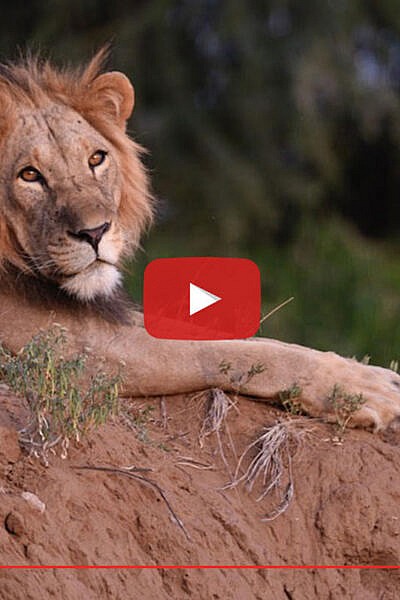

We are excited to announce the rankings of our annual Member Conservation Vote! When you become a member at Cheyenne Mountain Zoo, you get to vote on which conservation projects we support. $75,000 of membership revenue is sent to support employee-championed field conservation partners around the world. Thanks to CMZoo members, five conservation efforts will receive funding.
The Migratory Bird Project, the African Lion Project, the African Penguin Project and the Spotted Owl Project will receive full funding and the Pancake Tortoise Project will receive partial funding. Thanks to CMZoo members for helping protect wildlife and wild places!
If you are interested in becoming a member so you can vote in our future Member Conservation Vote, learn more at cmzoo.org/membership.
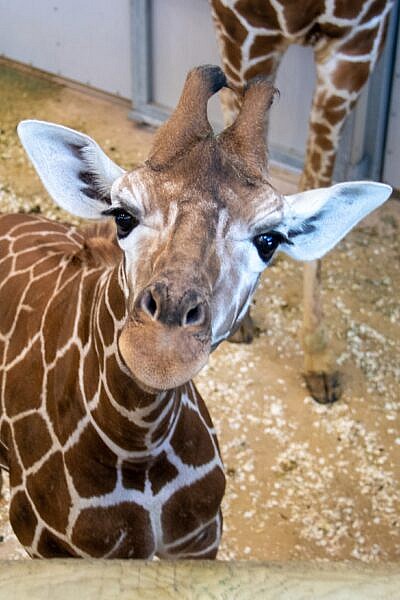

Welcome, Kay! The newest member of the tower has arrived, and she’s settling in with confidence and curiosity. Kay, a one-year-old female giraffe from Lincoln Children’s Zoo, arrived at CMZoo the evening of Wed., April 19.
Because Kay needed to be bottle fed as a baby, she is extremely outgoing and comfortable with people, which we hope will make her an incredible ambassador for her species. She gently and eagerly approaches her new keeper team through a protective barrier and enthusiastically investigates new spaces and enrichment activities at CMZoo.
Kay’s road trip went well, and she’s adjusting to her new home comfortably. Keepers say Kay stepped off of her trailer and into the barn like she’d done it a hundred times. LCZ’s team did a great job preparing her for this new adventure. A keeper from LCZ traveled with Kay to CMZoo and will stay for a few days to help her new keeper team get to know her.
While she completes a routine quarantine period, guests might see her in a back room of the barn or exploring the north giraffe yard near the meerkats in African Rift Valley. Kay is rooming with Msichana, a 20-year-old female giraffe whose calm and cooperative nature makes her a great first friend for Kay.
She can see, hear and smell most of the rest of the herd through fencing when they’re in the barn, and all involved seem quite interested in meeting. Ohe has been watching her from afar, and Wednesday seemed to stop in her tracks and stare at Kay when she first noticed her. Once Kay clears quarantine, her care team will introduce her to more members of the herd.
Please join us in welcoming Kay to CMZoo! We’ll keep you posted as she continues to settle in.
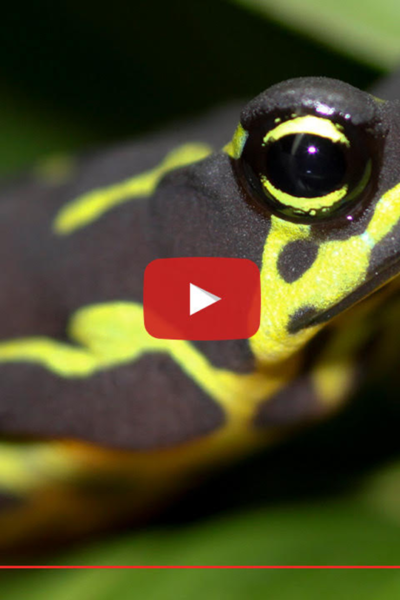

Cheyenne Mountain Zoo’s conservation team recently returned from Panama. The trip highlighted CMZoo’s commitment to support ongoing research, education and breeding efforts for amphibians facing threats in the wild.
As part of the Panama Amphibian Rescue and Conservation (PARC) project, Cheyenne Mountain Zoo is actively involved in saving 12 top-priority species of Panamanian amphibians threatened by an infectious fungus called chytrid.
Thanks to the breed and release work done with Wyoming toads, CMZoo and its partners have played an important role in helping support PARC. While the CMZoo conservation team was in Panama, they shared valuable knowledge and provided a case study to help further release strategies and future planning. With the sharing of information and financial support, we are excited to help develop future release plans for PARC.
Amphibians worldwide are facing a mass extinction, and by visiting CMZoo, you’re supporting teams focused on finding solutions. This trip was funded by our Quarters for Conservation program. Every time you visit the Zoo, you are making a difference for Panama frogs and many other species around the world.
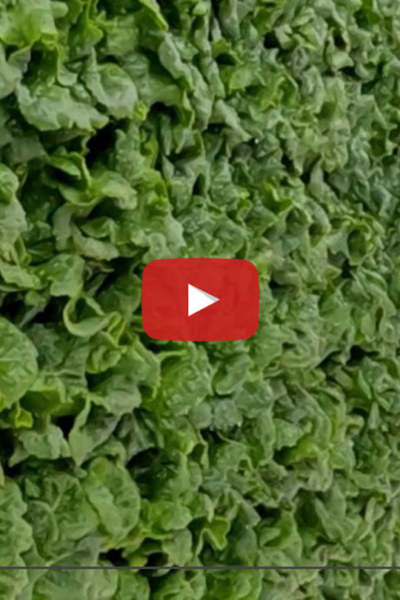

Our new shipping container farm recently produced its first crop!
The container is equipped with the latest hydroponic vertical growing technology, including blue and red LED grow lights with specialized wavelengths for leafy green production. In this first harvest, the CMZoo horticulture team looked for uniform shape and size in each plant, signs of disease or deficiency, any dead or damaged leaves, and ways to best transplant the next crop.
Through surveying the weight, time, and resources of this first crop, the horticulture team was happy with the success of the beautiful harvest and is already fine-tuning the farm in preparation for the next harvest.
This harvest is the first of many tests of the fully automated computer system that tells the CMZoo horticulture team the recipe of light, water, nutrient and spacing needs for the specific plant species. After a period of testing, the goal is to add more shipping container farms sourcing 50 percent of the lettuce for the giraffe feeding experience. An even longer-term goal is to grow 80 percent of lettuce for Zoo animals in farms like this one.
The next time you visit CMZoo and feed our giraffe herd, you might be feeding them lettuce straight out of our own farm!
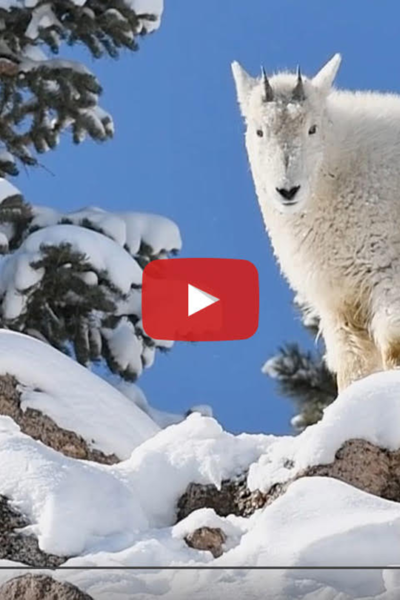

Five Rocky Mountain goats call CMZoo home. Twinkie (17), Yazhi (12), Albert (8), Lena (3) and Blanca (9 months) make up the herd seen high up in their customized habitat made up of cascading rock formations. This steep habitat mimics the terrain Rocky Mountain goats experience in the wild.
Their unique hooves have two toes with a soft center that acts as a kind of climbing shoe. Keepers help our goats get the best grip on the rocks through important voluntary hoof care training.
Our goats also participate in target training and scale training. When keepers ask the goats to touch or move to a target, they are rewarded with their favorite treats. This training allows keepers to weigh them on a scale, administer vaccines or other medications, and check their hoofs for overgrowth or foreign objects.
Next time you visit CMZoo, stop by the Rocky Mountain goat exhibit and watch members of the herd scale rocks with their nimble hooves!
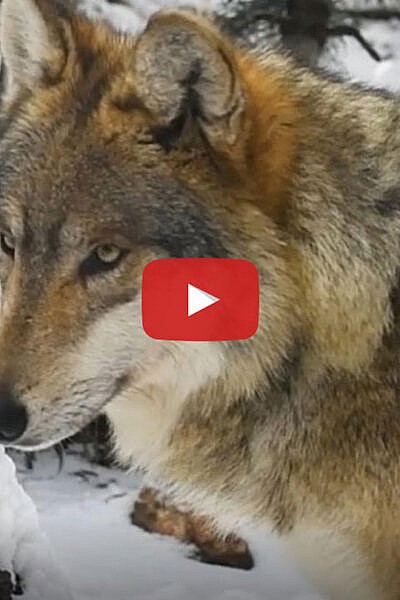

A magical experience is waiting for you at Cheyenne Mountain Zoo this winter!
With gorgeous views of Colorado Springs, CMZoo is the perfect place to be outside in nature, breathe fresh mountain air, grab a warm beverage from the Cozy Goat, get tickets at a discounted rate and visit your favorite animal friends.
Almost all of our animals can be seen all year long and the Zoo is open every single day! Animals such as our wolves, moose, Rocky Mountain goats, mountain lions, tiger, leopards, bears and otters thrive in the cooler weather. Animals native to warmer climates, like hippos, penguins, lemurs, primates, giraffe and wallabies, are given the option to go outside if it is a safe temperature. But guests can still see them in their warm indoor spaces, when they choose to stay inside.
Get more of the Zoo to yourself during our slower season, which is also our Value Days admission pricing season! Did you know you can get lower-cost daytime admission tickets through the end of February? Depending on the time of day, adult tickets range from $14.75 to $24.75 and child tickets (ages 3 to 11) range from $10.75 to $20.75. Children age 2 and under are just 75¢. Advance tickets are required. Find tickets and more information at cmzoo.org.
Take some time for you and your loved ones by enjoying a breathtaking adventure with us this winter.